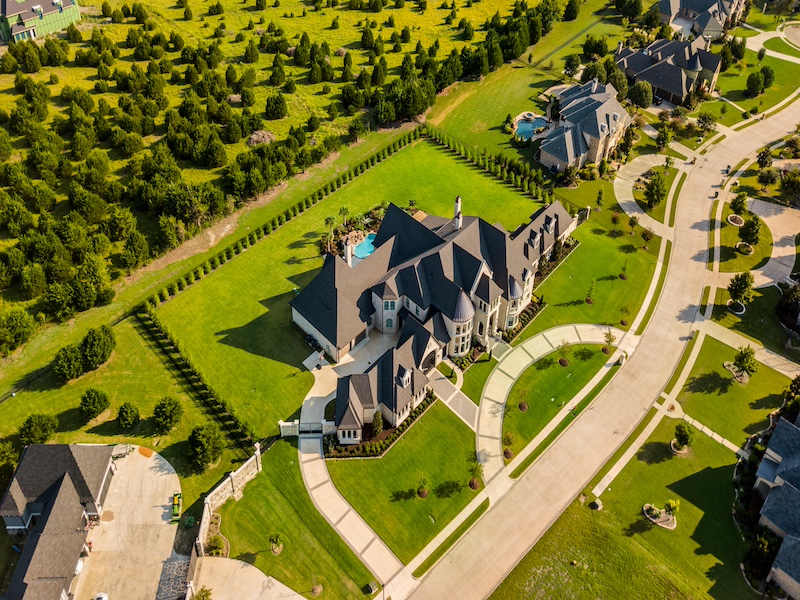The owners of capital are the real villains of the piece
The slogan ‘eat the rich’ has become popular amongst anti-capitalists. The slogan isn’t promoting some cannibalistic orgy on the rich — that would be weird. But it lays the finger of blame for social problems squarely on high and rising levels of inequality. The richest 1% have become the embodiment of the problem.
They live in mansions, while the rest of society struggles to pay rent (often to those in the 1%). They live jet-set lifestyles, while the rest of society is drowning in debt. They wear the finest designer clothes, while the rest of society can only glance through the shop window.
In its Global Wealth Report for 2023, Credit Suisse define the richest 1% as any adult who has assets worth over $1,152,062. They estimate the richest 1% comprises around 59 million adults worldwide. That 1% owns nearly 44.5% of global wealth. At face value, it’s understandable why so many lay the blame for social (and environmental) problems at the doorsteps of the 1%.
The thing is, this perception isn’t entirely accurate. When you dig a little deeper it appears that if we are to eat the rich to help distribute wealth then we don’t need to eat as many people as you would think. Rather than the 1%, the problem lies with the richest 0.1%.
To find out why we need to think about what the average 1 percenter looks like. Let’s take the UK as an example. To be in the top 1% of earners you need to be making £120,000 ($153,000) a year. Meanwhile, the number of homes worth over £1 million ($1,270,000) is 1 in 40 properties, which is 2.5% of all homes, or 730,000 properties. What do house prices have to do with incomes?
Imagine a scenario where someone earning £140,000 wants to buy a home. Let’s also imagine they have a large deposit of £200,000. To buy a home worth £1 million they would need the bank to lend them £800,000. But even if the person is lucky enough for the bank to agree to a mortgage five times the person’s income (an unlikely scenario with tighter controls on lending), the maximum loan value is £700,000. So the maximum value of the home they can afford is £900,000. And that’s before adding any costs like taxes and solicitor fees.
Even if the person buys at £900,000, they would be burdened with high mortgage repayments, so it’s not like they have unlimited funds. Now I’m not suggesting we get the violin out for those in the top 1% of earners. Their incomes allow them to live comfortable lifestyles. The point is that in the UK even if you are earning a salary that places you in the top 1%, it’s likely you won’t be able to afford to buy a home worth £1 million, let alone live in a mansion, or drive luxurious supercars.
So if there aren’t that many people who can afford to buy a home worth £1 million, how are there so many homes in the UK worth over £1 million? First off, many homes are purchased by foreign investors like ultra-wealthy Americans. Secondly, and more importantly, many of the homes now valued at £1 million were purchased when they were worth far less than £1 million. The owners of those homes are part of the 1% not because they earn high incomes, but due to an explosion in house prices.
They are property millionaires, who are part of ‘the 1% club’ simply due to buying the right property at the right time. In the case of the UK then, the majority of people that would be included in the top 1% are asset-rich, not income-rich.
So who are the ultra-wealthy we often associate with the 1%? The unsettling reality is that far fewer people have far more money than you would imagine. In the UK, from a population of 67 million people, 18,700 people earn over £1 million. The top 0.1% of earners earn over £500,000.
Looking further afield, billionaires are mentioned so often in the media that it seems like they’re regular run-of-the-mill people. But if the billionaire were a species it would be endangered. Forbes’s 37th annual billionaires list showed there are 2,640 billionaires with a net wealth of $12.2 trillion. That means 0.0000003% of people own 2.4% of all human wealth. When it comes to centi-millionaires, those with over $100 million, the figure stands at just 28,420, or 0.0004% of the human population.
Now these people do live in mansions. They can afford supercars. They can spend to their heart’s content. But what’s clear from the numbers is that the ultra-wealthy make up a tiny proportion of the 1%. For argument’s sake let’s say the top 0.1% are ultra-wealthy. What’s crucial is the means through which they have become so wealthy.
That means is the critical characteristic of capitalism. Capitalism is a system where the means of production are privately owned. Most of the top 1% of earners have high-paying jobs in businesses, but they don’t own those businesses. The real wealth lies with business owners. Yeah, there are musicians, movie stars and sportspeople who have joined the ultra-wealthy club, but they too are paid by the owners of capital.
So why are the owners of capital so problematic? As the economy grows we should all (in theory) benefit because a larger economy leads to more wealth, which creates higher incomes. But in modern society, free from regulations that seek to distribute wealth, the ultra-rich take a disproportionate amount of the wealth generated from economic activity. That’s why they are so rich.
A growing economy makes them richer while everyone else is left to fight over the leftovers. Inequality is by design. Private ownership of the means of production guarantees it. It’s why 40% of Americans are struggling to pay bills. It’s why 3.71 billion people live on less than $6.85 a day. It’s why 735 million people don’t have enough food to eat.
Now where the richest 1% are a problem is when it comes to consumption. The higher the income the more money someone has to buy more stuff. Seeing as every product or service we consume has an environmental impact, the more were consume the higher our footprint tends to be. As a result, the richest 1% contribute 16% of all carbon emissions, which is more than the bottom 66% of humanity.
When it comes to sustainability those emissions can’t be sustained. And here we get to the crux of the problem when it comes to high and rising levels of inequality. The argument for how we end poverty is to increase incomes. Incomes increase when economic growth is stimulated. However, globalisation has failed because it has simply given the owners of capital more avenues to make more wealth. They have reaped a disproportionate amount of the benefits while the poor remain. poor.
It’s as clear as day that the only way we can overcome systemic inequality is through distribution. Hence, those calls to eat the rich. This could be done through ideas like a maximum wealth tax, where, for example, any wealth or income exceeding $100 million is taxed at 100%. This would help to distribute wealth from those who have too much to those who don’t have enough. Rather than the argument that we need to build a bigger pie, we could end poverty by sharing what is already here.
Under a capitalist system, this can’t happen. A core belief of capitalism is that it’s private enterprise that leads to thriving societies. And it’s through the powers of free markets that wealth is distributed fairly through society. Essentially, you get back what you put in. What’s fairly obvious from taking a five-minute walk is that capitalism has never, and will never distribute wealth fairly. As long as production is privately owned, it is the ownership class that will continue to be rewarded far in excess of what could ever be deemed just.
What’s clear is that capitalism is incompatible with creating a more equal society. Capitalism is incompatible with ending poverty. Capitalism is incompatible with creating thriving sustainable societies. What’s required is the redesign of society around a different economic system.
The thing is the 0.1% rather enjoy their privilege and they will do whatever they can to maintain the status quo. The problem for them, and everyone else, is this state of affairs — where the economy continues to grow — can’t continue indefinitely because of the catastrophic environmental impacts associated with economic growth. Something is going to give, and as we progress into the twenty-first century that something will be the environmental conditions we depend on.
The risk of social collapse is the reason many argue billionaires are building luxurious bunkers. In preparation for massive unrest and chaos that is set to follow in the wake of weather extremes that wreak havoc on society. So while the richest amongst us have contributed most to the problems, they will be able to shelter themselves from those problems. The losers will be the poor. They always are. On second thoughts, maybe eating the rich isn’t such a bad idea after all.



